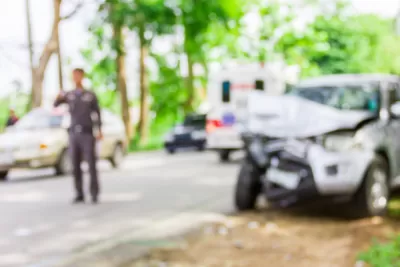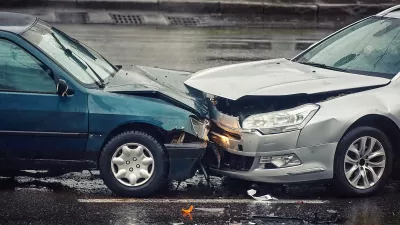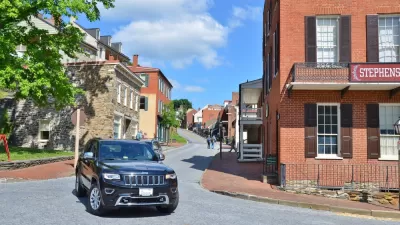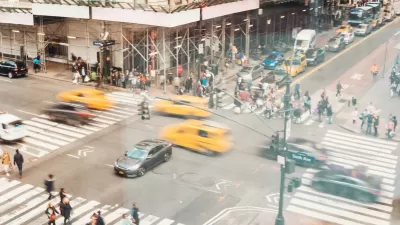The lack of a nationwide standard and extensive officer discretion lead to inconsistent data when it comes to traffic crashes and fatalities.

On the heels of "an explosive Washington, D.C., study that showed police had failed to record as much as 30 percent of 911 calls about drivers striking pedestrians, bicyclists, and other road users, with crashes going unreported most often in Black and brown neighborhoods," reports Kea Wilson. Advocates in Washington, D.C., for example, "say that as much as 40 percent of crashes in mostly Black areas may go uncounted — so District leaders may not even know where its most dangerous corridors are, much less have the specific data they need to fix them."
This underreporting of crashes, writes Wilson, "isn’t the only reason why U.S. communities don’t have a full picture of our national traffic-violence epidemic." Other important factors include: the lack of a federal crash-reporting standard; the flawed standard currently recommended by the National Highway Traffic Safety Administration (NHTSA), which omits important details such as "how far a walker who’s struck by a driver might be from the nearest unobstructed crosswalk" and vehicle height and weight; and the amount of discretion officers have in choosing what information to collect and report.
Rohit T. Aggarwala, senior fellow at Cornell Tech and author of an op-ed encouraging Secretary Buttigieg to reform the Fatality Analysis and Reporting System (FARS), "hopes that, with the right reforms, much subjectivity can be stripped from crash reporting" so cities can have more accurate data when making Vision Zero plans.
FULL STORY: Why U.S. Car Crash Reporting Is Broken

Alabama: Trump Terminates Settlements for Black Communities Harmed By Raw Sewage
Trump deemed the landmark civil rights agreement “illegal DEI and environmental justice policy.”

Planetizen Federal Action Tracker
A weekly monitor of how Trump’s orders and actions are impacting planners and planning in America.

The 120 Year Old Tiny Home Villages That Sheltered San Francisco’s Earthquake Refugees
More than a century ago, San Francisco mobilized to house thousands of residents displaced by the 1906 earthquake. Could their strategy offer a model for the present?

In Both Crashes and Crime, Public Transportation is Far Safer than Driving
Contrary to popular assumptions, public transportation has far lower crash and crime rates than automobile travel. For safer communities, improve and encourage transit travel.

Report: Zoning Reforms Should Complement Nashville’s Ambitious Transit Plan
Without reform, restrictive zoning codes will limit the impact of the city’s planned transit expansion and could exclude some of the residents who depend on transit the most.

Judge Orders Release of Frozen IRA, IIJA Funding
The decision is a victory for environmental groups who charged that freezing funds for critical infrastructure and disaster response programs caused “real and irreparable harm” to communities.
Urban Design for Planners 1: Software Tools
This six-course series explores essential urban design concepts using open source software and equips planners with the tools they need to participate fully in the urban design process.
Planning for Universal Design
Learn the tools for implementing Universal Design in planning regulations.
Clanton & Associates, Inc.
Jessamine County Fiscal Court
Institute for Housing and Urban Development Studies (IHS)
City of Grandview
Harvard GSD Executive Education
Toledo-Lucas County Plan Commissions
Salt Lake City
NYU Wagner Graduate School of Public Service





























